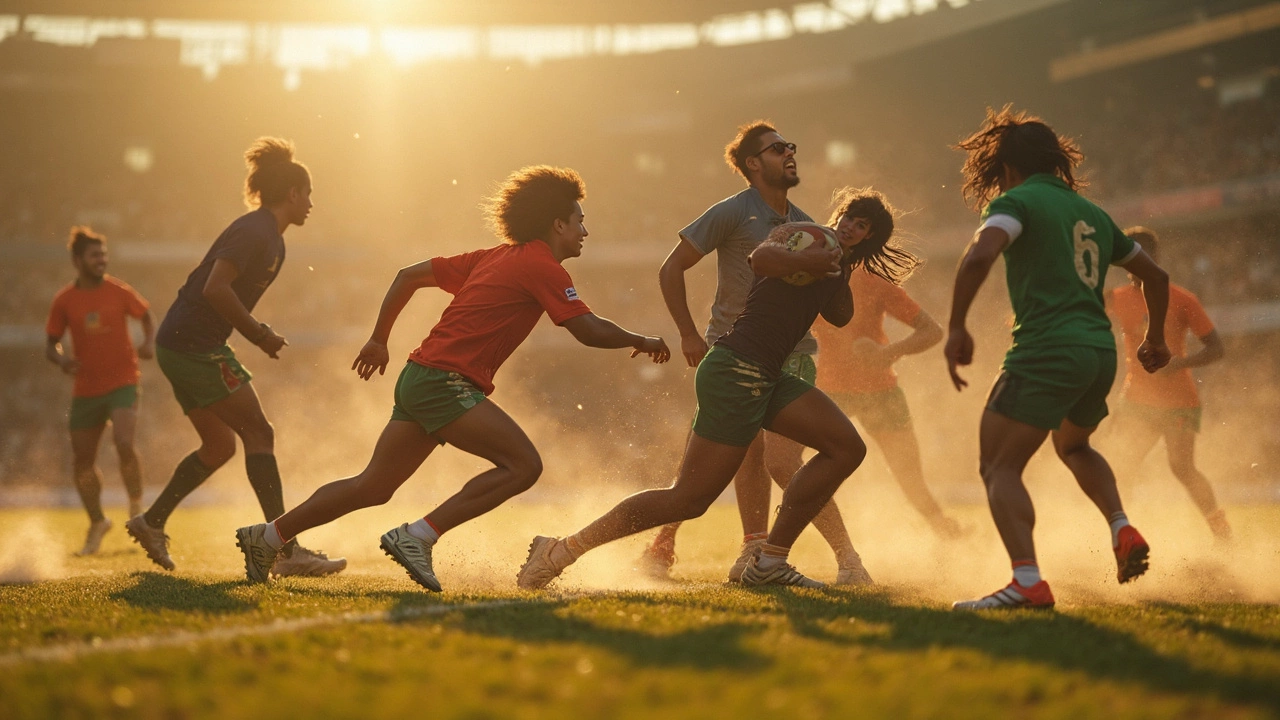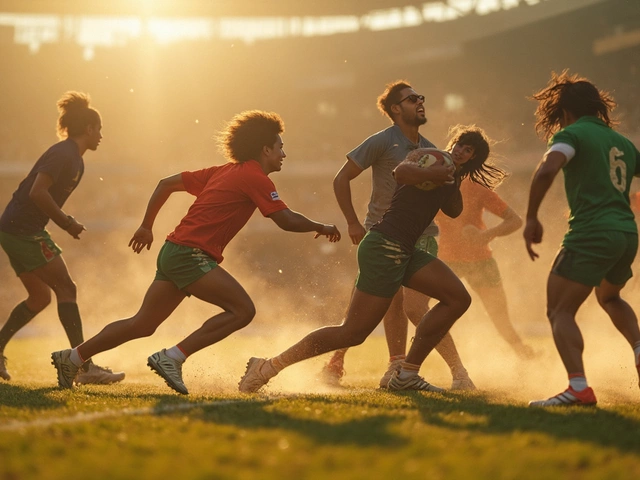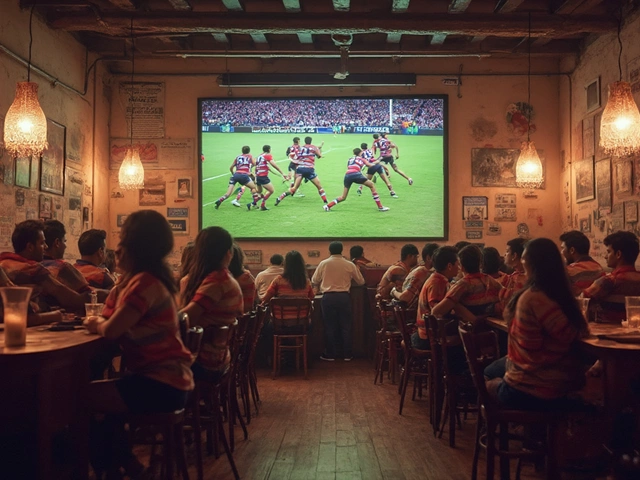If blood, sweat, and battered bodies are hallmarks of toughness, rugby usually grabs the spotlight. But the age-old debate rages on: which demands more grit—rugby league or rugby union? This isn't just a pub argument between friends. The answer hinges on rules, pace, contact, and even tradition. Some rugby legends have swapped jerseys and left whispers behind about which code punched harder. Yet, when you get into the bone-crunching details, the picture gets complicated, and some answers might surprise you.
Rules and Structure: Where the Battles Begin
On paper, rugby league and rugby union look like siblings. But the moment the referee's whistle blows, their differences slap you in the face. Rugby union feels more like a strategic chess match mashed with brute carnage. Each team packs 15 players—big scrums, lineouts, and tangled rucks where the ball can vanish under limbs for epic stretches. League, meanwhile, trims to 13 players per side. Possession is simpler. You have six tackles to make something happen; if not, hand the ball over.
Now, where it gets really wild is in the style of play. Union's rules allow for prolonged contests for the ball—a breakdown after nearly every tackle, with forwards driving into each other repeatedly. Play can grind on slowly or explode in phases. There's less space, but the collisions are constant, especially in tight quarters.
Contrast that with league. The six-tackle rule means there's no time to sleep. Every set is high tempo, more open, and less stoppage. Players don't waste time on endless rucks or mauls. Instead, they smash straight into defensive lines, tossing the ball wide when possible, then blast back to defend without a break. Some describe it as a sprinting war of attrition—you've got fewer players, which creates more space, but that just means more metres to cover and more tackles per person. The GPS stats back this up. The average rugby league player covers around 8.5km per match, compared to union’s 6.5km. League players also average over 30 tackles each—union’s top tacklers might hit that number but plenty finish with half as many.
The differences only grow sharper with set pieces. Union’s scrums, weighing in at a whopping 1,800kg of combined human mass, are a force of physics. The biggest union forwards face about a tonne of impact every scrum, making it a test of raw power that simply doesn’t exist in league, whose lighter, faster scrums mostly restart play rather than contest it. So, are you built like an ox and thrive in close-quarters chaos? Union probably feels tougher. Are you endurance-focused and enjoy wave after wave of collisions? League will run you ragged.
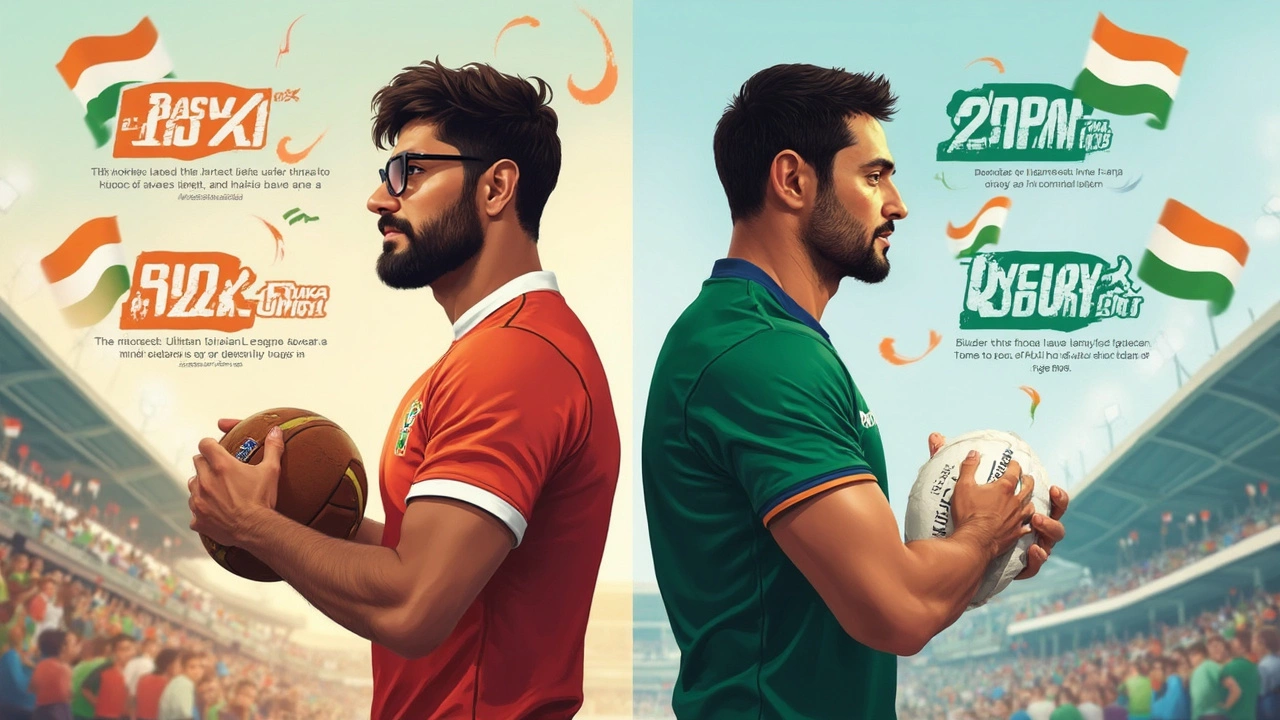
Body Hits, Injuries, and Wear: Where Toughness Hurts Most
People often point to the spectacle of bone-rattling hits as the mark of true rugby toughness. Both codes deliver their fair share of highlight-reel shunts, but the way those hits rack up—and the aftermath—differs a lot.
Let’s talk numbers. A 2023 injury audit by Premiership Rugby found that, on average, union players can expect about 54 injuries per 1,000 player match hours. For rugby league, the Super League 2022 report clocks in at slightly higher: 59 injuries per 1,000 player match hours. That's fierce, and league definitely edges it on collisions per player, mainly because of the relentless pace and lack of a breakdown. But the nature of these injuries marks a dividing line. Union’s statistical breakdown shows higher rates of scrum and ruck injuries—neck, shoulder, and knee problems dominate. League's injuries often come from open-field tackles, where speed collides with size—that often means shoulder bust-ups and head knocks. Both versions carry a significant risk of concussion, with union tallying about 7 per 1,000 match hours and league sitting close behind at 6 per 1,000.
One difference is how the pain gets divided up. In union, the biggest forwards carry the brunt—just watching the front row’s faces tells you half the story. In league, everyone gets battered. The wingers aren’t hiding on the edges; they’re just as likely to be folded in half by a loose forward as anyone else. Average tackles per player per game in league? About 25 to 35. In union? Regularly below 15 unless you’re a back-row tackling machine.
So, who has it worse? Here’s a table for a quick look at the numbers:
| Aspect | Rugby Union | Rugby League |
|---|---|---|
| Players per team | 15 | 13 |
| Avg tackles per player | 15 | 28 |
| Distance covered (per game) | 6.5km | 8.5km |
| Scrum weight impact | 1800kg | 1200kg |
| Avg injuries (per 1000 player hrs) | 54 | 59 |
| Concussion rate (per 1000 hrs) | 7 | 6 |
A lot of players say league leaves them feeling more physically cooked. The recovery time backs that up: rugby league players average less than four days between games but union players, with a standard week, have around six days. Plus, pro league seasons can hit 30 games—the NRL has 27 rounds versus the Top14’s 26 for union in France, but league often throws in extras like State of Origin, stacking up the bruises.
Does this prove league is tougher? It depends how you define it. League’s grind is relentless, but union’s moments of impact can literally shift bones, especially in the set piece. Here’s a tip: if you want to protect your body and last longer, learn how to tackle low, strengthen your neck, and avoid telegraphing your runs. Both codes will find your weaknesses in no time.
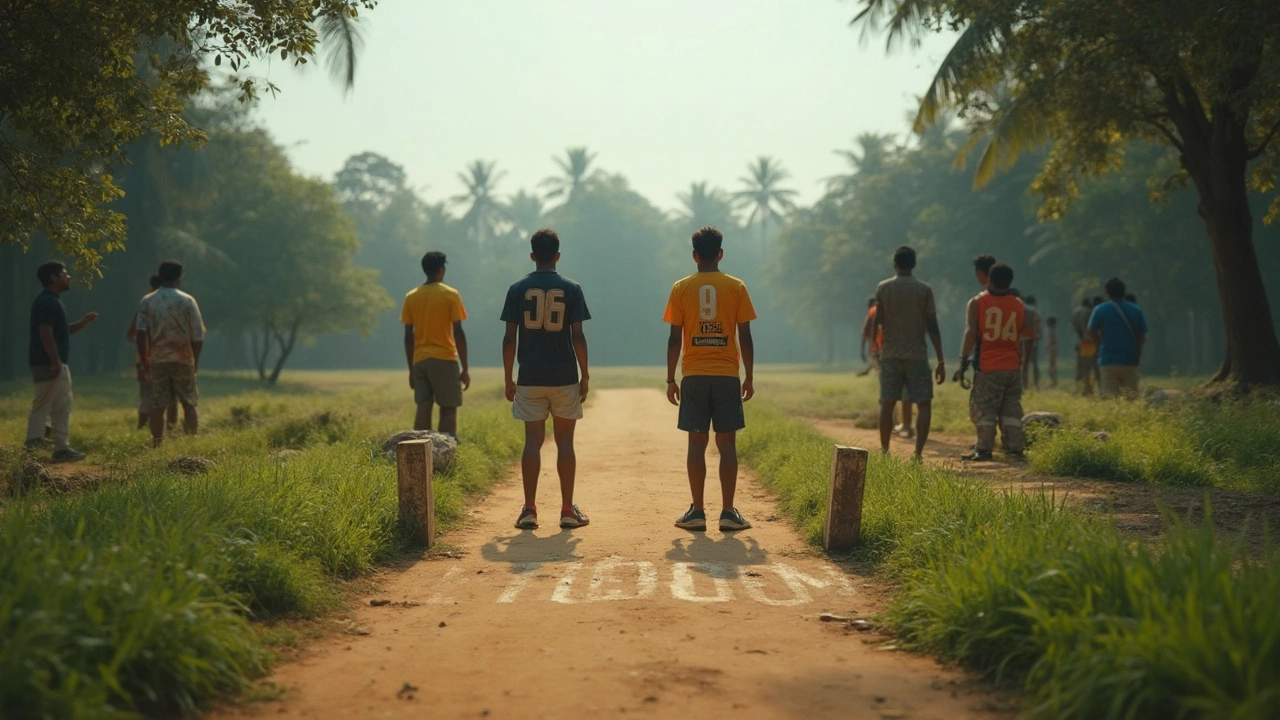
The Fan Debate and Picking Your Side
No debate on rugby toughness ends without mentioning what fans, players, and coaches bring to the discussion. Have you heard of Sam Burgess? He starred in rugby league, became a cult hero, then hopped over to union for a World Cup—only to admit years later that the skillsets, pain, and pressure of both codes humbled him. Or Sonny Bill Williams—an all-star with NRL and World Cup triumphs in union, who called each version a "different type of war." Most crossover stars say adaptation, not toughness, is the real test.
Fans of both codes go to great lengths to poke fun at the other. League supporters say union is “just rucking around,” too dominated by aimless kicking. Union fans claim league players are one-dimensional, only running straight (never mind those outrageous sidesteps from the likes of Billy Slater or Shaun Johnson). But sit at a match—whether at a freezing English Premiership ground or under the fiery Sydney sun—and you’ll see the commitment in every tackle, no matter the shirt.
One wild stat: rugby union’s top-level games, like in the Six Nations, sometimes hit over 200 tackles combined. But in an NRL Grand Final? You’ll see each side rack up 400 tackles combined. Double the hits, double the bruises. Yet, the union scrum—the pile of sinew that can move at nearly the speed of a car crash—doesn’t exist in league. That’s a whole different type of grimace-inducing pain. The styles, rhythms, and moments of chaos are like yins and yangs.
If you’re looking to pick a side—or even decide which code you want to play—here’s a crash course on how to decide:
- If you love long phases, tactical battles, and don’t shy from close-contact contests, union might be your battlefield. It prizes versatility, from sprinting wingers to hulking props.
- If endurance is your thing, and you love constant action with no time to hide, league will test you. Every player needs just as much gas in the tank as the next—there’s nowhere to catch your breath.
- Training for either? Work on your cardiovascular fitness and explosive power for league, or your strength and technique for scrums in union. Top coaches say focus on neck and shoulder stability for both. Don’t ignore your ball skills—both codes expect even forwards to pass and catch under pressure.
That brings the spotlight on personal preference. Watch a few matches, see where you get drawn in: is it the furious rhythm of league, or the tactical drama and massive set-pieces of union? No matter which you pick, toughness is a badge worn by all who step across the white line. And anyone who says one is easy probably hasn’t played at all—or is just looking to wind someone up at the local after work.
